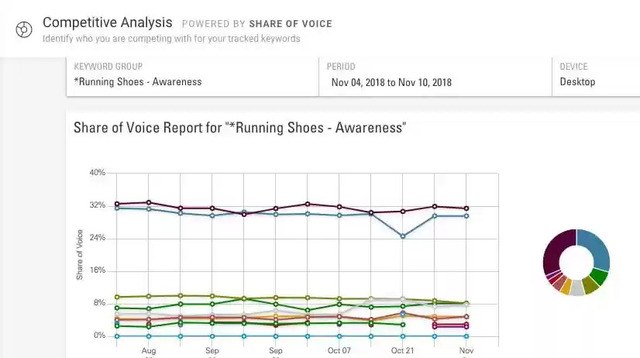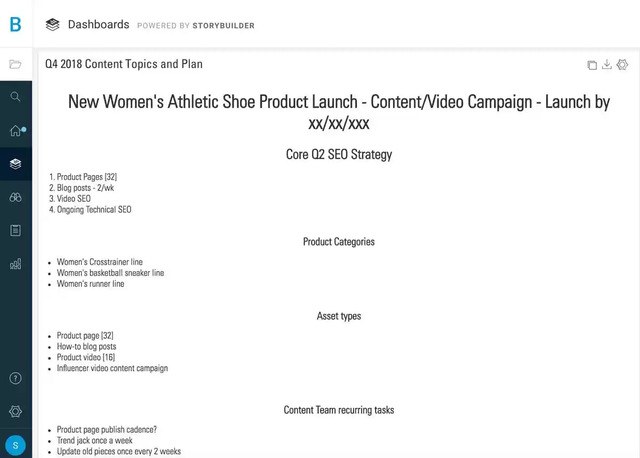Since the beginning of the digital era, marketers have recognized that content is king. Although the sophistication of the resources and analytics have improved drastically for those in the industry, the importance of creating regular, high-value content for your users has never declined.
It is always a good time to be organized as a marketer, but Q4 is the right time to plan out your marketing content calendar for the first half of 2019.
According to the Content Marketing Institute, content marketing pulls in six times the number of leads of other forms of marketing. Meanwhile, websites who publish regularly with blog posts will have 434 percent more pages indexed than those that do not. Moreover, the organizations that create a marketing content calendar to publish 16 or more posts per month will see 3.5 times the amount of traffic than those who publish 0 to 4 articles on average.
Regularly publishing this content, and doing so with a cohesive strategy that benefits your organization, can be a challenge. The higher cadence requires organization and direction for all the content creators.
Marketing content calendar challenges and opportunities
However, content calendars present a number of challenges: the primary one is getting people to use it, which breaks down into what and how buckets. The what is the software and there are surprisingly few good standalone content calendars. New software itself creates two hurdles, one on the review and purchase side and two on the deployment and getting people to use the marketing content calendar side. People often default to Excel spreadsheets and Google Docs. Local spreadsheets quickly get out of sequence if people edit locally and version control becomes a problem. Google Sheets on the server help with those two problems.
The key things to a good marketing content calendar are: that it aligns to the marketing strategy, accessible, regularly updated, and easy for people to understand so they can find their topics and asset types and produce.
There is a way to build a marketing content calendar in BrightEdge StoryBuilder as a custom report. In addition, to having no additional cost, a marketing content calendar has the added benefit of drawing people onto the platform, which helps expand and elevate SEO in your organization.
Step 1. Know who you want to write for
Creating a marketing content calendar will only effectively drive brand engagement if you understand exactly to who you want to speak and what they will want to read. You want to analyze your target audience and understand their motivations, pain points, and what they will respond to when considering a purchase.
Most businesses will have more than one type of audience. This means that you will need to differentiate between a few different personas and variations of buyer journeys.
Understanding your buyer personas should be done with cooperation from different departments within the organization, such as your sales and customer service teams. These customer-facing parts of the brand will have a good idea of what matters to those who decide to buy from the company and the pain points they face. They can also help fill in information about what makes customers choose this particular company over others in the space.
Finally, to better understand your customers, you can speak to your customers themselves. Surveys can shed light on the common motivators that inspire people to make a purchase. You can learn more about the pain points they want to solve and what brings them to your company.
This information about who your customers are and the journey they take that brings them to conversion points will help you create effective content.
Step 2. Do a content audit to know precisely what material you already have
Once you know the audience your content will target and the journey they take, you want to audit what content already lives on your site. The content you already have can be refreshed or tied directly into new campaigns in your marketing content calendar to improve its ability to bring in traffic.
While running through a content audit, you can also look to see which content has been the most successful in terms of consumption and engagement. You can gauge the ability of your existing content to drive traffic and conversions, looking at the different elements and topics these pieces cover, which can help you start to plan marketing content calendar campaigns.
To audit your current marketing content calendar:
- List your current material
- Look up the traffic and engagement rates for your content in your analytics or site report
- Determine the keywords the content serves
- See where they fit regarding your buyer persona’s and their place on the buyer’s journey
This will help you find important gaps, uncover your best-performing pieces of content, and give you a better idea of what your customers want to read.
Step 3. Determine key periods for your brand that will influence content
Take a look at the yearly calendar for your organization. Highlight any key periods that will correlate with important marketing and marketing content calendar campaigns. For example, many businesses will want to create marketing promotions that align with the holidays and sale season of Q4. Your organization might also host or sponsor industry events. If you run a local business that gets involved in community events, you might want to check local calendars to mark when these events will arise.
Any of these occurrences might influence the type of content you create and the campaigns you run, and should therefore be included on your marketing content calendar.
Step 4. Map out overarching marketing content calendar campaigns and strategies
You have now likely mapped out a few campaigns related to events and seasons that impact your brand. Now, the time has come to determine the marketing content calendar campaigns that will fill the time in between. Keyword research, studying the trends impacting your industry, and doing competitive research can all provide you with ideas to inspire campaigns throughout the year.
On your marketing content calendar, map out when your campaigns will occur, detailing also your goals and ideal outcomes. Remember the value of creating multi-channel campaigns, so your marketing content calendar campaign ideas should stretch beyond only the written content you create. These campaigns should be determined with the cooperation of those in paid advertising, social media, and even traditional forms of advertising.
Step 5. Determine the content types you will need and create a marketing content calendar
Now that you know what your overarching campaigns will be, the time has arrived to plot out your exact forms of content. Each campaign should take into account your predetermined buyer personas and their individual buyer’s journeys.
Consider the different types of content that will likely be involved in the marketing content calendar campaigns. You will likely want to use combinations of content such as:
- White papers
- Blog posts
- Webinars
- Social posts
- Infographics
- Videos
- Articles
- Case studies
Consider how you want to talk to people at different phases of the buyer's journey. Different types of content tend to align better with people at different phases. Generally speaking:
- For those in the early stages of the buyer’s journey, strategize your marketing content calendar around blog posts and infographics
- For those in the middle stages of the buyer’s journey, use content such as webinars and ebooks
- For those at the end of the buyer’s journey, use content such as tutorials and case studies
Look at your campaign themes and see how you can start to develop the different types of content within that theme. Consider also the type of people needed to create the different types of content. Knowing who you will need to collaborate with on the project will allow you to give people plenty of warning and assemble your team and resources.
Step 6. Assign a marketing content calendar owner
An important part of making a marketing content calendar successful is follow through. The best way to ensure this is to assign a designated owner for the calendar who will ensure that things are moving forward. This marketing content calendar owner can be a senior person on your team or a project manager type specialist.
Step 7. Set up recurring content meetings
A weekly recurring meeting keeps content development top of mind and allows team members to share any potential roadblocks, status updates on their project, and new ideas.
If there isn't time available to schedule a new meeting, you can also attach the content session to an existing staff meeting or SEO team meeting.
Step 8. Define a style guide
Your style guide and grammar guide should be defined, distributed, and posted near your marketing content calendar.
Step 9. Establish a cadence for marketing content calendar publishing
At BrightEdge we plan 3-4 integrated marketing campaigns per year. Additionally, our blog publishing cadence is 2-3 times per week. That cadence means that we need to have a running list of the next 12 topics in the marketing content calendar at all times.
Step 10. Have a review process with built-in time
The process for content review needs to be clear for everyone, and all participants need to allocate review time to keep the process moving briskly. At BrightEdge we publish the content calendar in the platform, review at least weekly, have a writer, an editor, a corporate communications or executive review, final grammar sweep, and final SEO tuning for on-page links. We usually finish the steps after the first draft in 48 hours.
Step 11. Use BrightEdge to assign topics and content to different members of the team
Particularly when you work to create content through collaboration with different teams, assigning tasks to people with ample headway can make a big difference in how effectively your group works together. BrightEdge makes it easy to assign tasks to the different members of your team. You can identify topics for your marketing content calendar through BrightEdge and then assign them to the subject-matter experts who would be able to create the most effective content.
Through the Recommendation feature, you can also assign specific tasks to members of the teams.
Using these features allows you to designate the owners of particular tasks, keeping track of who is responsible for each stage of content development. This will improve your efficiency and effectiveness.
Creating a marketing content calendar can be an effective way to boost your content production and content strategy. Your content will be tightly aligned with a marketing content calendar strategy and it will be pre-planned, allowing you to capitalize on opportunities that arise throughout the year. Consider these steps and prepare your marketing content calendar today.




